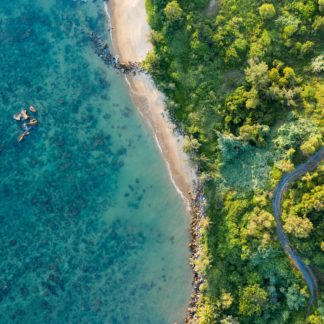Travelling in Vietnam
Travelling in Vietnam can be quite a challenge, but the journeys are undeniably a big part of the Vietnamese experience. The distance between the two most populous cities, Hanoi and Ho Chi Minh City, is almost 1200km, a minimum of 33 hours by train. Vietnam is 1,650 km long but only 50 kms wide at the narrowest point, thus getting from one place to the other means mostly travelling south or north.
As you can see, the distances are long and travelling from one place to the next can take a while. Go through your options in our Travelling in Vietnam travel guide.
You can also look at some of our tour suggestions | Three week tour across Vietnam | 10 day North Vietnam Tour
 Train, flights, buses, taxis, motorbikes and even boats are available for travelling in Vietnam.
Train, flights, buses, taxis, motorbikes and even boats are available for travelling in Vietnam.
Flights in vietnam
For the longest time, state-owned Vietnam Airlines was the only airline flying domestic in Vietnamese skies. Though it still dominates the market, it has recently been forced to compete with several low-cost carriers. Vietnam decided to open its market to airlines like Jet Star Pacific, VietJet and Air Mekong to keep up with the increasing number of tourists.
The heavy competition has led to cheap flights; tourists are now able to cover the 1200km distance from Hanoi to Ho Chi Minh City in a mere $40. With many connections and timings, and convenient locations of airports, flights are the best option for long-distance travel in Vietnam.
Vietnam is a great value for money destination, have a detailed look at the cost of travel in Vietnam!
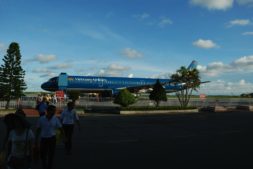 The State-owned Vietnamese airlines dominates the market but there are also a number of other airlines offering cheap flights within the country.
The State-owned Vietnamese airlines dominates the market but there are also a number of other airlines offering cheap flights within the country.
Travelling in vietnam by train
The famous Reunification Express curves through the entire country, from Hanoi to Ho Chi Minh City. This train is historically relevant to Vietnam; it was completed by the French in 1936, and linked Hanoi to Ho Chi Minh City until 1954, when Vietnam was divided into north and south and the railway was cut. This entire journey takes anything between 33 to 36 hrs depending on which train you take.
However, there are several stops on the way, making travel in Vietnam by train extremely convenient. Here are some convenient train connections we recommend:
– Ho Chi Minh City – Nha Trang: 7h, day and night connections
– Nha Trang – Da Nang (close to Hoi An): 9-11h, day and night connections
– Hue – Ninh Binh: 12h, overnight
– Hue – Hanoi: 14h, overnight
– Hanoi – Lao Cai (close to Sapa): 8h, overnight
Trains have different classes, and some even boast a VIP section. Tickets can cost anything upwards of $30 for the comfortable sleeper options – we highly recommend sticking to these. Booking ahead is recommended, and can be done either at the stations, or through agencies. Make sure you go through more of our articles on trains in Vietnam to be well prepared.
Trains are a great option to see the countryside as they go through regions where not many tourists would usually go to. You see endless rice paddies, small traditional villages and lots of tropical forests. And travelling at night saves you time and the charges it would take for a hotel room as well.
However, it is important to note that it comes with a compromise on comfort as the toilets aren’t always the most modern or clean, and locals tend to smoke onboard. But it’s eco-friendly, authentic and it’s laid back – and that’s why many travellers prefer to experience travel in Vietnam by train. Simple meals are sometimes included in the price of the ticket, though we’d recommend packing a few heavy snacks for the journey.
Just fill out our plan your trip form for us to prepare a no obligation travel plan for you!
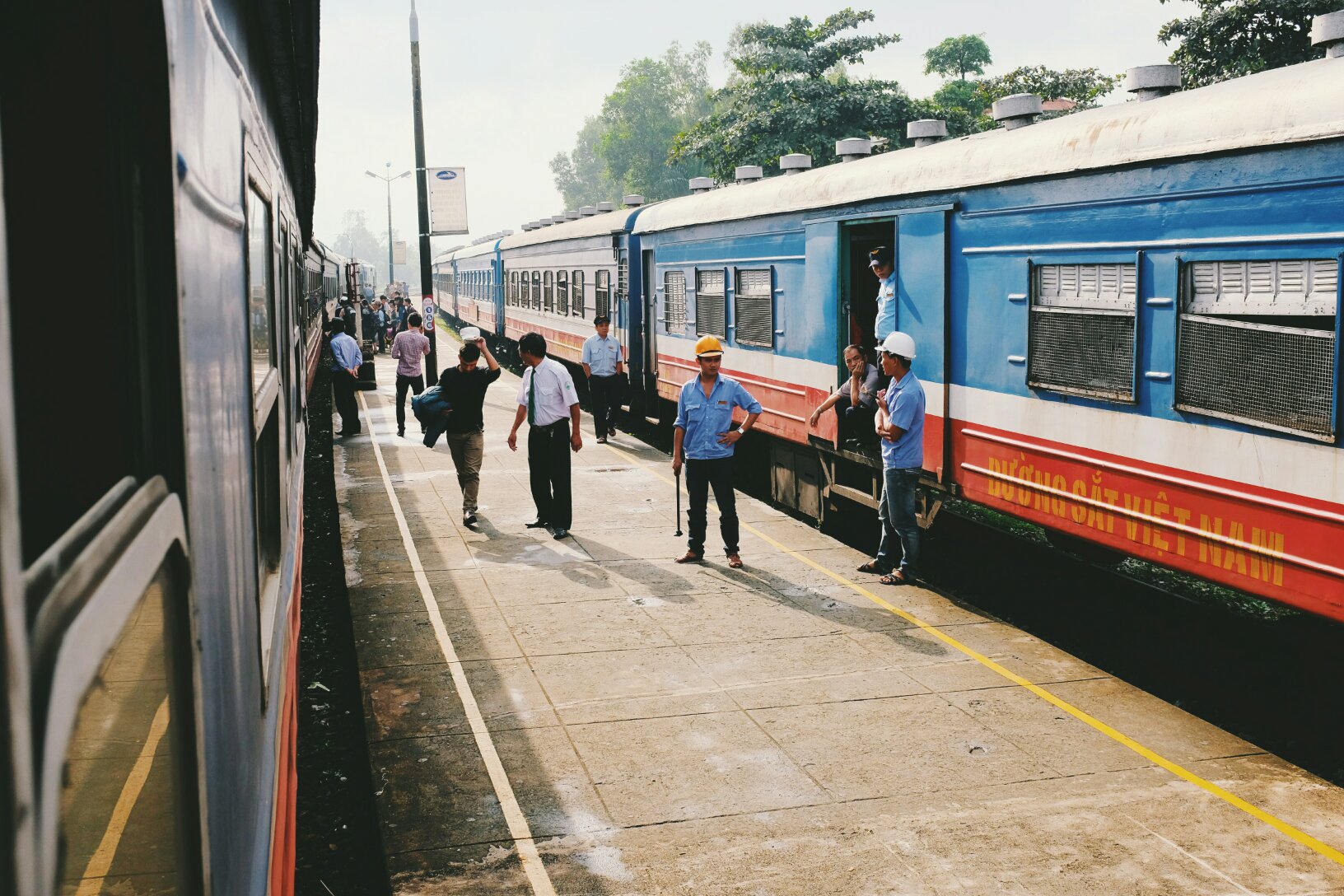 Travelling by trains in Vietnam is extremely convenient, comfortable and an unforgettable experience.
Travelling by trains in Vietnam is extremely convenient, comfortable and an unforgettable experience.
Travelling in vietnam by Private Car
Private car-and-driver arrangements are great for short distances and excursions like the distance from Ho Chi Minh City into the Mekong Delta, from Hoi An to Hue (or vice versa) or from Hanoi to Halong Bay. The roads are mostly in good condition with few bumps, especially closer to the metropoles and on highways. We don’t recommend self-drive rentals as the Vietnamese traffic can be quite a challenge.
However, all car hire agencies offer cars with chauffeurs. Drivers don’t speak English though, which is why it often makes sense to book a guide along. You will find this especially handy for car services combined with sightseeing for multiple days. However, this option does not come cheap as petrol and cars in general are expensive in Vietnam. Expect to pay anything from $50 to $100 per day depending on the distance driven and amount of stops on the way.
Wondering when is the best time to visit Vietnam?
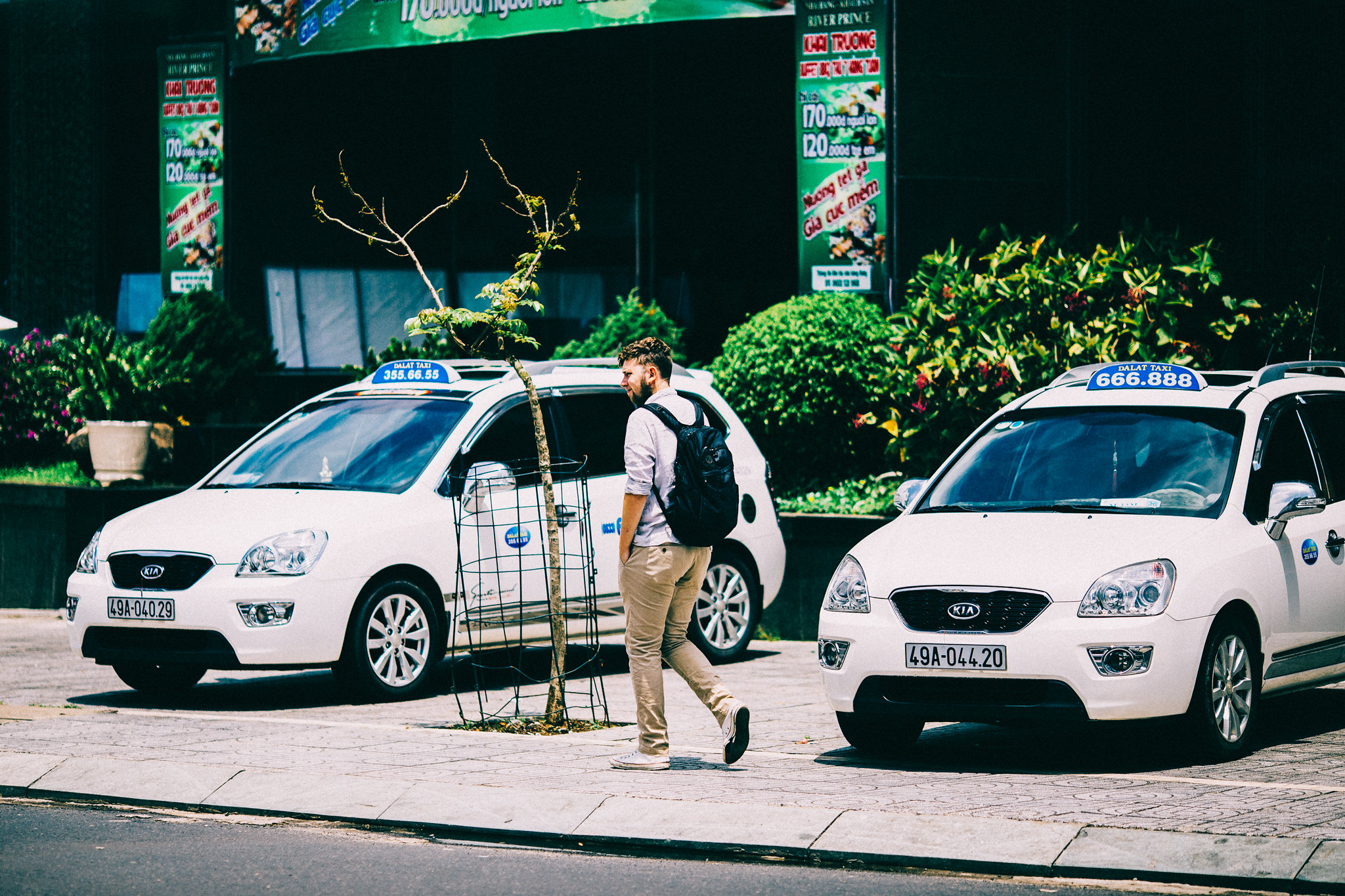 Hiring a private car and driver in Vietnam can be expensive but is very comfortable and convenient for short distances.
Hiring a private car and driver in Vietnam can be expensive but is very comfortable and convenient for short distances.
Travelling in vietnam by Easy Rider – Motorbike taxi
The first thing you realise in Vietnam is that the motorbike rules the streets when it comes to traveling in Vietnam. Every family has at least one, as they make it easy to navigate the tiny city alleyways and the difficult countryside roads.
It gained tourist attention after the huge success of the Top Gear 2018 episode that showcased Jeremy Clarkson’s bike adventures in Vietnam. However, there is a fair amount of caution that must be exercised. The traffic in Vietnam is unpredictable with constant overtaking irrespective of rules. As a result, we advise against renting and riding motorbikes, irrespective of distance. The language barrier will further complicate any issues or unfortunate incidents, especially with the authorities. Additionally, you will have a hard time finding medical centers and well-equipped hospitals except for in major cities.
It is possible to rent a motorbike with a driver to drop you from point A to B. It is especially popular to travel the Hai Van Pass that stretches from Hoi An to Hue or vice versa on bike. This is something we definitely recommend as you get to enjoy the thrill of a motorbike road trip without the responsibility and difficulty of driving. Five-hour trips also have stops on the way that are often skipped by car drivers. The drawbacks are the minimal luggage requirement- you’ll have to make do with either a big backpack or small suitcase on your back, and a small backpack on the tank.
Hiring bikes+drivers for groups is also a possibility, and a fun one at that. You can also hire a bike+driver for multiple days. Costs start at $70 per person, and varies depending on the distance and duration of the ride. Always check everything over carefully before renting, especially brakes, lights and horn. You will be offered a helmet as well, which you must take (and make use of) as it is compulsory to wear a helmet in Vietnam, even if you’re riding pillion.
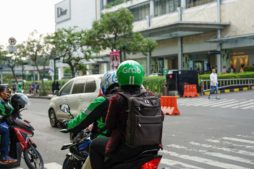 Hiring a motorbike with a driver can make it easier to get around in Vietnam and also lets you enjoy a thrilling ride.
Hiring a motorbike with a driver can make it easier to get around in Vietnam and also lets you enjoy a thrilling ride.
Travelling in vietnam by Bus
Many backpackers in Vietnam opt for the bus as it is the cheapest mode of transport and also quite comfortable. There are different kinds of buses to choose from, but the go-to for long-distance travels is the sleeper bus with reclining seats. The travel is quite an experience- read more about how to get around Vietnam by this adventurous mode of transport. There are also normal seater buses as well as smaller buses with only around 26 seats. In Vietnam, you get what you pay for, as the cheapest transport service in Vietnam comes with some disadvantages: rude service, overbooked buses (locals sleeping in the aisle), sometimes (but not always) dangerous driving, no toilet breaks if there is a toilet on the bus, and a run-down interior.
The Vietnamese remain rooted to culture, and they travel home to celebrate the Tet holidays with family. As a result, you might face an issue of booked out trains or extremely steep flight prices around that time. That’s when these buses might be your only option for long-distance travel, especially when you book fairly last-minute.
In some regions, you can avail of something called limousine van services. These are basically mini buses that can accommodate 8 to 10 people plus the driver. They are extremely comfortable and convenient as they offer hotel pick-up and drops. The limousine service is a shared service, that picks up and drops many people to their hotels. This increases your total journey time. However, the limousine vans often come with great features like WiFi, USB charging spots or just wonderfully comfortable seats.
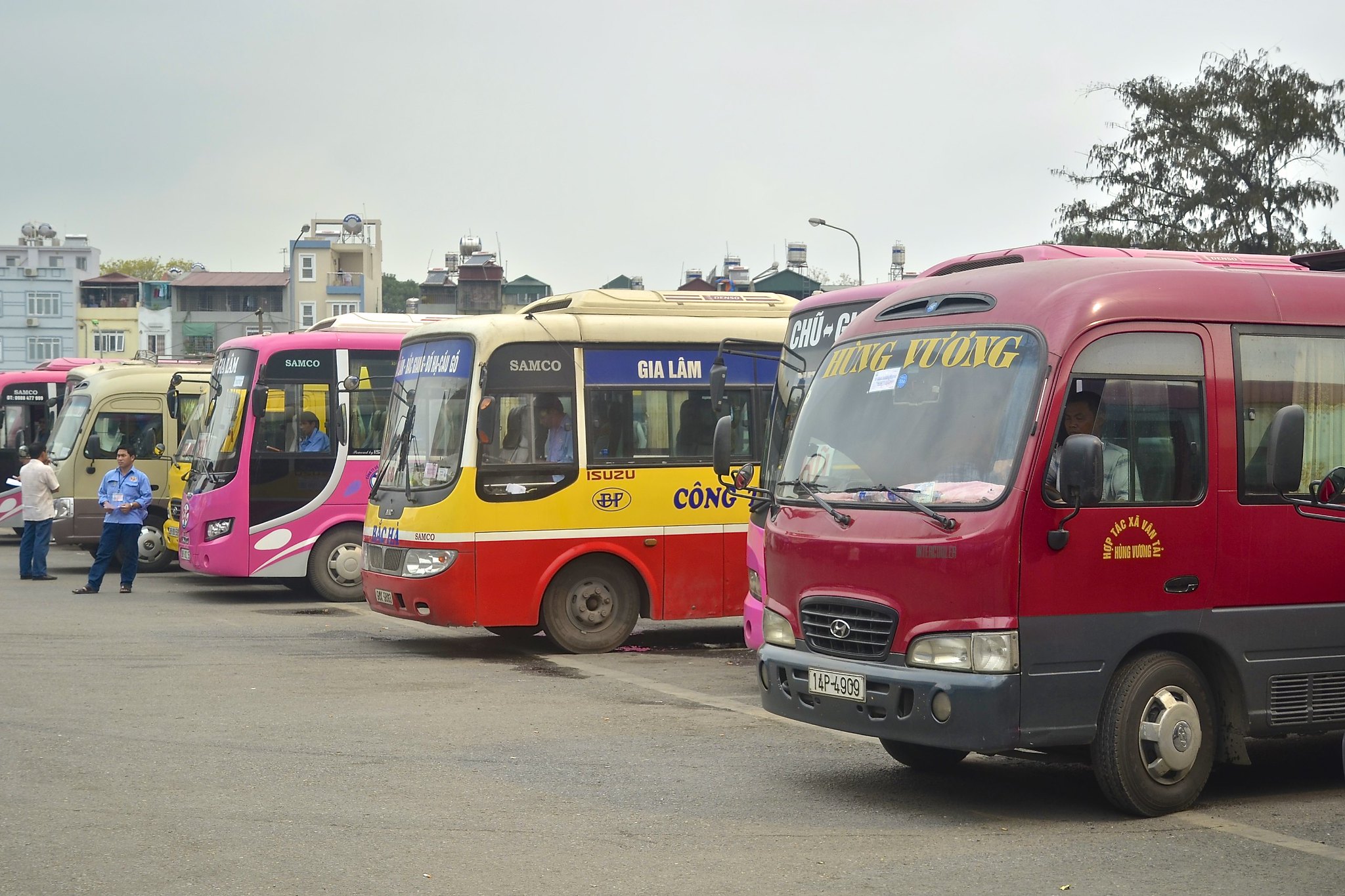 Buses are the cheapest mode of transport in Vietnam. It is quite comfortable and also backpacker-friendly.
Buses are the cheapest mode of transport in Vietnam. It is quite comfortable and also backpacker-friendly.
Travelling Within Cities in Vietnam
Vietnam is probably the only country in Southeast Asia without the famous tuk-tuks. Tourists instead use taxis and motorbike taxis. We recommend choosing one of the two public taxi brands: Vinasun and Mai Linh (green cars or white cars with green red lines). All the others often refuse to go by the meter, and are sometimes involved in tourist scams.
The safest, cheapest and best way to get around is by using ‘Grab’, an app-based ride-hailing service. It is widely considered to be the Vietnamese ‘Uber’, which no longer operates there. You can book cars or motorbike taxis with ease, and avoid unnecessary disputes over use of the meter. The starting price is between VND 10,000 and 12,000. However, the final cost will change depending on factors like traffic, demand, and parking and waiting charges. Grab bikes will give you a helmet, which is a legal requirement in Vietnam.
Smaller towns like Hoi An, Ninh Binh or Phong Nha are great for rented bicycles, and Hoi An hotels give them out for free, though without helmets. If you use a mix of taxi hire, Grab services, bicycling and walking, you should spend an average of $10- $15 a day. The most convenient of course would be to hire a car for the entire duration of your stay per city, but only if your budget allows for it. Bicycles, taxis and walking around make for interesting ways to discover the cities as well.
 We recommend using Vinasun and Mai Linh Taxis or Grab, which is an app based ride hailing service where you can book cars or motorbike taxis.
We recommend using Vinasun and Mai Linh Taxis or Grab, which is an app based ride hailing service where you can book cars or motorbike taxis.
The best way to travel in Vietnam depends entirely on your budget and itinerary, as well as your willingness to sacrifice comfort for local experiences. However, the bonus is that you have an array of options to choose from, irrespective of budget. Travelling solo in Vietnam is as much of a breeze as travelling with a family. Click on ‘Plan Your Trip’ to let us help you figure out travelling in Vietnam.
helping you travel your way
We provide a helping hand to independent travellers who need assistance with planning and booking their trip. The primary goal is to turn your dream holiday into reality.



